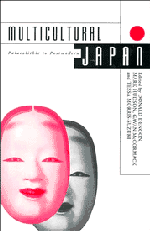Book contents
- Frontmatter
- Contents
- List of Figures and Tables
- List of Contributors
- Abbreviations
- Introduction
- Part 1 Archaeology and Identity
- Part 2 Centre and Periphery
- 5 A Descent into the Past: the frontier in the construction of Japanese history
- 6 The Place of Okinawa in Japanese Historial Identity
- 7 Ainu Moshir and Yaponesia: Ainu and Okinawan identities in contemporary Japan
- Part 3 Contact with the Outside
- Part 4 The Japanese Family
- Part 5 Culture and Ideology
- Afterword: Diversity and Identity in the Twenty-First Century
- Index
6 - The Place of Okinawa in Japanese Historial Identity
Published online by Cambridge University Press: 05 November 2011
- Frontmatter
- Contents
- List of Figures and Tables
- List of Contributors
- Abbreviations
- Introduction
- Part 1 Archaeology and Identity
- Part 2 Centre and Periphery
- 5 A Descent into the Past: the frontier in the construction of Japanese history
- 6 The Place of Okinawa in Japanese Historial Identity
- 7 Ainu Moshir and Yaponesia: Ainu and Okinawan identities in contemporary Japan
- Part 3 Contact with the Outside
- Part 4 The Japanese Family
- Part 5 Culture and Ideology
- Afterword: Diversity and Identity in the Twenty-First Century
- Index
Summary
Introduction
Ninety years have passed since the first discoveries of prehistoric pottery by Torii Ryūzō in the Yaeyama Islands, at the Kabira shell-mound. Later, pioneering research by Tokunaga Shigeru led to the discovery of ancient deer fossils on Iejima. Excavations by Ōyama Kashiwa of the Iha shell-mound confirmed that Okinawa had been populated by ancient people. Tawada Shinjun summarised the prehistory of the Ryūkyūs as a few dedicated scholars pieced it together in the aftermath of the Pacific War. The establishment of the Okinawan Archaeological Association, and the outstanding accomplishments of a new generation of scholars who emerged in the 1960s, brought Okinawan archaeology to a new level. Economic development in the past two decades has provided opportunities for many extensive excavations, leading to a deeper understanding of ancient culture and, unfortunately, complete excavation and destruction of countless sites.
Humans arrived in Okinawa more than 30 000 years ago. While sites on the main islands of Japan have yielded artefacts possibly as old as 200 000 years or more, human fossils are rare and fragmentary; Okinawa still yields the most complete fossil record of the archipelago. A gap of 10 000 years separates the Okinawan Pleistocene human fossils from the oldest sites of the Shell-mound period.2 Whether Palaeolithic populations died out, to be replaced by post-Pleistocene populations is debated. Suzuki Hisashi argues that the present-day Okinawans are ‘direct descendants of the Minatogawa man’ (see below), while Takamiya Hiroto leaves open the question of direct ancestry.
- Type
- Chapter
- Information
- Multicultural JapanPalaeolithic to Postmodern, pp. 95 - 116Publisher: Cambridge University PressPrint publication year: 1996
- 5
- Cited by



